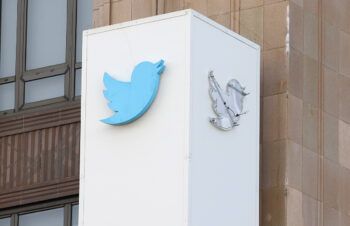Marketing Professor On Twitter’s Rebrand

If hashtags are any indication, the rebranding of Twitter to “X” is leaving users scratching their heads. Texas A&M Today asked Mays Business School Professor of Marketing Venky Shankar for his take on X CEO Elon Musk’s decision and the risks of rebranding.
What is “rebranding?”
Rebranding is the act of changing one or more elements of an existing brand’s name, logo, look and feel, identity, central message, and image.
What are the risks of rebranding?
Rebranding can have several negative effects:
- Alienating or losing a brand’s existing followers, loyal adopters or advocates.
- Not gaining enough traction/awareness for the rebrand.
- The rebrand not being perceived as intended by the target audience.
- The new brand being confused with other brands.
What do you think of the Twitter rebrand to “X?”
Although Elon Musk has a reputation of being different and quirky in his business decisions, the changing of the brand name from the widely popular term “Twitter” to the generic letter “X” appears to dilute a powerful brand name. The disappearance of the iconic and ubiquitous Twitter bird logo further risks losing the cachet.
If the brand can use the renewed interest in Twitter or X to keep its loyal users engaged and attract more youth (TikTok and Instagram users) to its platform, it could expand its userbase and usage of the platform.
What has been the public’s reaction to the move, as you’ve observed it?
Public reaction can be summarized as bewilderment. Questions such as, “What is X?” “Why change from Twitter?” “Why X?” have been debated at length on social media. Many have expressed confusion and dissatisfaction, while others have hailed it as a symbol of innovation and progression. Many are lamenting the demise of the chirpy bird, but others have praised the new minimalist design. And many people are finding the situation quite humorous!
Are there examples of rebrands you thought were effective and others not as well-received?
Two successful rebrands that come to mind are Dunkin Donuts to “Dunkin” — expanding beyond donuts to a slew of food and beverages — and Pottery Barn, which changed its brand message to include sustainability as a core value.
Less successful rebrands were Tropicana orange juice, which became less visible with a hard-to-view, new vertical logo; also, the core message of “no pulp” was removed. The Gap rebrand, as well, featured a generic new logo, which was unannounced and confusing to customers.
How can companies successfully rebrand?
Decisions on rebranding and rebranding campaigns are best done based on careful research and a deep understanding of consumers and the marketplace.
To be successful, companies should follow the following principles:
- Determine if there is a compelling need to rebrand. If so, make sure the rebrand has a better chance of performing than status quo and won’t exacerbate the status quo.
- Do a comprehensive brand audit. Go beyond cosmetic changes (brand refresh) and deeply explore all the brand elements, including name, logo, image, look and feel, identity, message, content and related attributes.
- Start with the target audience’s needs and perceptions. Ask: if the current brand does not adequately cater to their tastes and preferences, what new brand concepts will? What will inspire or excite them?
- Understand the target audience’s emotional connection with the brand. Work on deepening the emotional associations in each element of the rebrand.
- Identify and create a rebrand that fits better with the buyer persona for the brand rather than trying to develop a rebrand that appeals to the masses.
- Test the rebrand elements thoroughly with the target audience and make suitable adjustments.
- Carefully plan and execute a well-funded rebrand campaign.
Media contact: Lesley Henton, lshenton@tamu.edu





